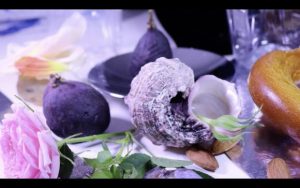
The Scent of Full Moon – Studies for Pure Movement, or How to Grow and Care for Night-Blooming Jasmine
Night-blooming jasmine, or Cestrum nocturnum, is a fast-growing shrub from the Solanaceae family. At nightfall, it’s greenish-white or yellow flowers emit an intoxicating jasmine-like fragrance that is most attractive to pollinators. In 1967, the Jornal do Brasil asked Lispector, a Ukrainian-born Brazilian novelist and short story writer, to write a weekly column about any topic of her choosing. On April 3, 1971, her column entry titled De natura florum was written in the form of a dictionary outlining her own definitions of various plants and their anatomies. The 20th definition of a total of 24 was that of night-blooming jasmine:
Has the scent of the full moon. It is phantasmagorical and a little frightening—it only comes out at night, with its intoxicating smell, mysterious, silent. It belongs also to deserted street corners and darkness, to the gardens of darkened homes with shuttered windows. It is dangerous.
The name of this exhibition—which speaks of life and what nourishes us, as well as of decay, namely what is left behind—is drawn from the writings of Clarice Lispector. The works within this exhibition are disruptors of more traditional and linear definitions of time and space. Belliveau’s compositions are whimsical yet eerie. They are as intoxicating, phantasmagorical, and invasive in their activation through the use of stop-motion animation as Night-blooming jasmine is for the pollinator and the gardener.
Belliveau’s still lives are anything but still. They are as transgressive as the 17th century paintings that have also inspired them. Clara Peeters was a Flemish still-life painter who worked professionally despite the many restrictions imposed upon women at the time. By reviving shapes and compositions found within this painter’s work in her own sculptural practice, Belliveau further distorts time and space as she seemingly creates passageways between epochs. These hallways allow for a more expansive interpretation of what is matter, of what is time, and what is archive. In a sort of creative osmosis, Belliveau reaches through Peeters’ canvases and Lispector’s pages to bring forth, to this side of the temporal membrane, the visual elements, words, and stories that must be revisited and have an interest in coexisting in the present day.
Presented as part of VAM / FICFA







